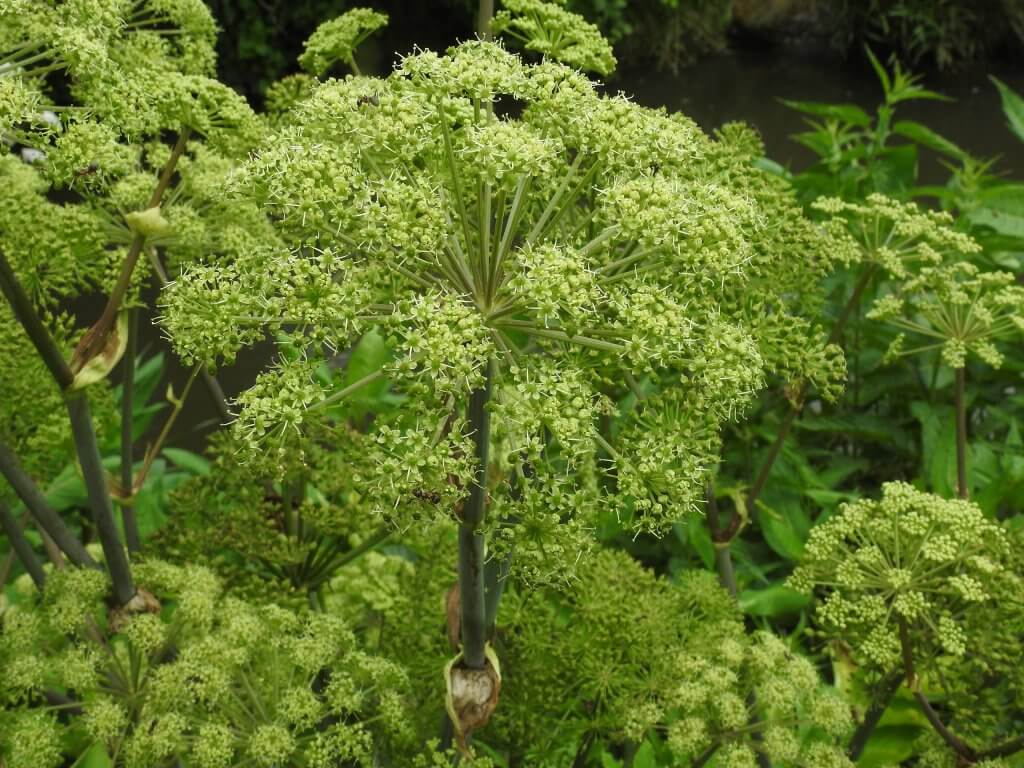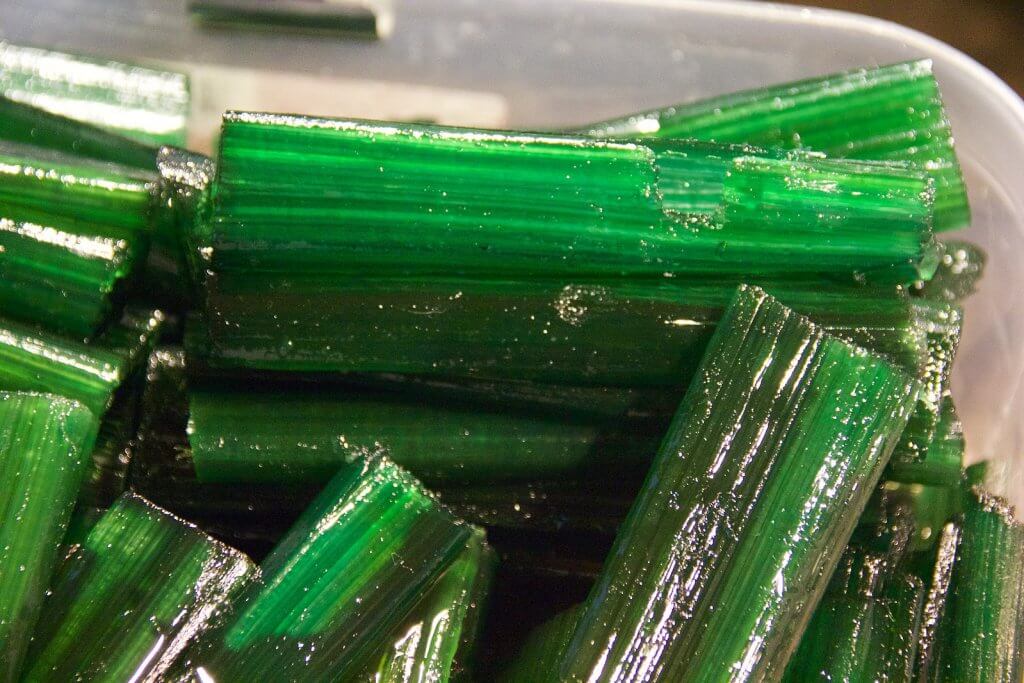Angelica (Angelica archangelica) is a biennial, and particularly hardy herbaceous plant. It can tolerate extreme frosts and is particularly pest resistant. Growing to a maximum height of approximately 8 ft, it consists of long fluted stems, and small broad leaflets with a slightly serrated edge. When flowering, in June to August, the flowers are small, white tinged with yellow and green and grouped into numerous stems to form clusters or umbels. Other common names for Angelica include Wild Celery, Norwegian Angelica and Garden Angelica. It typically grows wild in parts of northern Scandinavia, Russia, Greenland, Iceland and the Faroe Islands. However you can find it growing in woodlands, coastlines, riverbanks, forests and gardens across Europe.

(Source: Robert Flogaus-Faust/Wikimedia Commons)
Cultivation & History of Angelica

(Source: Franz Eugen Köhler, Köhler’s Medizinal-Pflanzen/Wikimedia Commons)
Once native only to Northern Europe, Angelica is now grown and farmed for medical and culinary purposes in a number of European countries, including France, Germany and Hungary. For optimal growing it requires a damp soil, as when found in the wild it often favours shady areas close to rivers and streams. You will now find it growing within many herb gardens, for its sweet aromatic scent and culinary uses.
Angelica has been cultivated for centuries, predominantly for its medicinal value. It was often referred to as ‘Root of the Holy Ghost’ by many physicians and alchemists. During the 16th and 17th centuries Angelica was widely grown and used across Europe for many different applications. The French use it to create a well known liquor ‘Chartreuse’, and Norwegians use the roots in the production of their bread.
Toxicity
You can safely consume Angelica within food quantities. However care should be taken if you are taking supplements of the herb as an overdose could cause nausea and other discomforts. It’s similar appearance to other poisonous Apiaceae species means that you must take care in identifying and consuming any wild plants. You should avoid sunlight when taking Angelica as a supplement as it can cause photosensitivity. Pregnant or breast feeding individuals should not take Angelica as a supplement. In high doses some of the substances found within could be toxic to the health of the baby. It even has a historical medicinal use of purposefully causing abortions.
Uses
Culinary Uses of Angelica
The roots, seeds, fruit, leaves and stem of Angelica are perfectly edible. You can use them as an ingredient in a wide range of recipes. From Angelica leaves in salads and teas, to the stems being used to create a jam. It can also be candied and eaten as a sweet, or used to decorate cakes. It is believed to have been the Danes who first began to produce and sell candied Angelica. The roots, seeds and fruit are commonly used to create Angelica oil. The oil can be used in many liquors and even some perfumes.

(Source: Mike Peel/Wikimedia Commons)
Medical uses of Angelica
As a medical aid, Angelica has a long history of being used to provide relief or to cure a number of ailments. From toothache and rheumatism, to the common cold. As modern day scientists begin to further research its potential benefits the number of medicines that use Angelica is only set to grow. It is now often used to treat indigestion, circulatory problems and even anorexia as it can sometimes help to stimulate an appetite. It is also frequently used as a topical medicine to treat skin disorders and even nerve and joint pain.
Did you know…
The scientific name Angelica archangelica was said to have been inspired from the dream of a monk in the late middle ages. The archangel Michael visited the monk and informed him that this particular herb could be used to help cure and prevent the bubonic plague. After news of the dream spread, all individuals from peasants to royalty, collected the herb in hope of protecting themselves.
Conclusion
Angelica can make a wonderful addition to many herb gardens and kitchen recipes. From desserts and sweets to omelettes and garden salads. Its medicinal value has been well revered throughout history and for good reason. The herb contains a number of beneficial compounds and substances still being used in modern medicine today.
—————Written by Hannah Sweet
Hannah is a freelance writer and graphic designer from the UK. With a penchant for travelling, photography and all things botanical, she enjoys writing about a wealth of topics and issues, from conservation and slow living, to design and travel. Learn more about her writing and design services at www.sweetmeanders.co
Many of our readers find that subscribing to Eat The Planet is the best way to make sure they don't miss any of our valuable information about wild edibles.
See our privacy policy for more information about ads on this site






